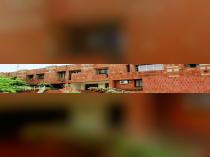What is the JEE Main Round 7 BTech cutoff at JNU?
-
1 Answer
-
Jawaharlal Nehru University admission to the BTech course is based on valid JEE Main scores, followed by the counselling process. JNU BTech cutoff 2024 was concluded after the released of JEE Main Round 7 Seat Allotment Result. As per JNU BTech cutoff 2024, the closing rank for BTech in Computer Science and Engineering was 33509 and for BTech in Electronics and Communication Engineering, it was 47591.
Considering the JEE Main Round 7 closing rank for JNU cutoff 2024 for BTech, Computer Science and Engineering was the most competitive specialisation. Given below is the year-wise JEE Main last round closing rank for JNU BTech
...more
Similar Questions for you
Kurukshetra University JEE Main Cutoff 2025 was released for all the categories and rounds belonging to the AI and HS quota. For the General AI category, the cutoff ranged from 431535 to 1076882, according to the first and last round closing ranks. According to the last round, University Institute of Engineering and Technology, Kurukshetra University faced the highest competition for admission to the BTech CSE course for the same category.
MDU Rohtak JEE Main Cutoff 2025 has been released for admission to the BTech course specialisations for all categories and rounds for students belonging to All India and Home State quota. For the General AI category, the cutoff ranged from 165563 to 1389859, according to the first and last round closing ranks.
According to the last round of the JEE Main Cutoff 2025, the hardest college for admission for the General AI category is University Institute of Engineering and Technology, Maharshi Dayanand University, with a cutoff of 167341, and the easiest was B M Group of Institutions (BMGI), at 1389859 rank.
- Candidates with JEE Main percentile 20 and above are given first priority in the REAP merit list. Then, candidates with JEE Main percentile less than 20 are considered.
- Second priority will be given to the class 12 marks.
- Candidates with DVoc qualifications will be given third priority
Candidates with JEE Main scores of 20 percentile and above are given priority in REAP merit list. If you do not have JEE Main score, you will get less priority in ranking.
JMI JEE Main Cutoff 2025 has been released for admission to the BTech programme. The first round closing cutoff ranged from 17752 and 51961 for the General category candidates under the All India quota. The most sought-after BTech specialisation was B.Tech. in Computer Engineering with a cutoff rank of 17752, and the least popular was B.Tech. in Civil Engineering programme. For more details, click here.
Taking an Exam? Selecting a College?
Get authentic answers from experts, students and alumni that you won't find anywhere else
Sign Up on ShikshaOn Shiksha, get access to
- 66k Colleges
- 1.2k Exams
- 680k Reviews
- 1800k Answers


